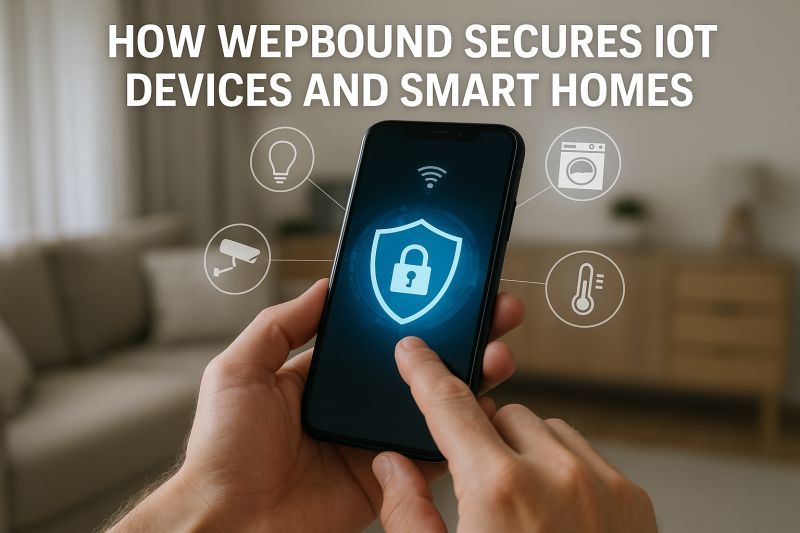How Wepbound Secures IoT Devices and Smart Homes
The Internet of Things (IoT) has transformed how we interact with technology. From smart refrigerators to voice-controlled assistants and connected security cameras, IoT devices have become an integral part of our daily lives. However, with this convenience comes significant security challenges. Cyberattacks on IoT devices are on the rise, and traditional security measures often fall short.
This is where Wepbound technology enters the picture. Designed to provide next-generation network security, Wepbound offers robust encryption, dynamic authentication, and AI-powered intrusion detection. In this article, we will explore what Wepbound is, how it secures IoT devices, and why it is the future of smart home security.
What is Wepbound Technology?
Wepbound is an advanced networking protocol that focuses on secure connectivity for IoT devices, smart homes, and next-gen networks. Unlike traditional protocols like WEP, WPA, or even Wi-Fi 6, Wepbound provides multi-layered security, real-time traffic monitoring, and adaptive encryption techniques.
Why IoT Devices Need Strong Security
IoT devices often run on minimal hardware and outdated firmware, making them easy targets for cybercriminals. Common threats include:
- Device Hijacking – Hackers gain control of smart devices.
- Man-in-the-Middle (MITM) Attacks – Data interception between devices and servers.
- Botnet Infections – IoT devices used in DDoS attacks.
Traditional Wi-Fi security protocols like WPA2 are no longer sufficient because IoT ecosystems require scalable, adaptive, and lightweight security solutions. Wepbound addresses these challenges.
How Wepbound Secures IoT Devices
Wepbound provides multi-layered security for IoT ecosystems. Here’s how it works:
1. Dynamic Encryption
Unlike static keys in WPA/WEP, Wepbound uses rotating encryption keys that change periodically, making it harder for attackers to crack.
Benefits:
- Protects against brute force attacks
- Reduces key exposure time
- Ensures forward secrecy
2. Device Authentication and Zero-Trust
Every IoT device connected through Wepbound must go through multi-factor authentication before joining the network.
Benefits:
- Eliminates unauthorized access
- Prevents lateral movement of threats within the network
3. AI-Driven Threat Detection
Wepbound employs machine learning algorithms to analyze traffic patterns and detect anomalies in real time.
Benefits:
- Identifies new threats without relying on signature databases
- Reduces false positives compared to traditional IDS systems
Benefits of Wepbound in IoT and Smart Devices
| Feature | Impact on IoT |
|---|---|
| Dynamic Encryption | Prevents data interception |
| AI Threat Detection | Stops zero-day attacks in real time |
| Zero-Trust Model | Prevents unauthorized device access |
| Low Latency | Supports real-time communication |
| Cloud Integration | Ensures seamless hybrid deployments |
Comparison: Wepbound vs Traditional IoT Security Protocols
| Feature | WEP/WPA | Wepbound |
|---|---|---|
| Encryption | Static keys | Dynamic key rotation |
| AI Threat Detection | No | Yes |
| Zero-Trust Model | No | Yes |
| Scalability | Limited | High |
Use Cases of Wepbound in Smart Homes
- Smart Appliances – Secures data from connected refrigerators, ovens, and washing machines.
- Home Surveillance Systems – Prevents hacking of IP cameras.
- Voice Assistants – Protects Alexa, Google Home, and similar devices.
- Smart Thermostats and Energy Systems – Ensures energy efficiency without security risks.
Future of Wepbound in IoT
As IoT adoption continues to grow, Wepbound will integrate with 5G, edge computing, and AI-driven networks. It is expected to become a standard protocol for smart homes, autonomous vehicles, and industrial IoT.
FAQs
1. What makes Wepbound better than WPA3?
Wepbound provides dynamic encryption and AI-based threat detection, whereas WPA3 uses static keys and traditional authentication.
2. Can Wepbound work on all IoT devices?
Yes, Wepbound is lightweight and scalable, making it ideal for IoT ecosystems.
3. Is Wepbound ready for 5G?
Absolutely. Wepbound is designed with edge computing and 5G in mind, ensuring low latency and high security.






